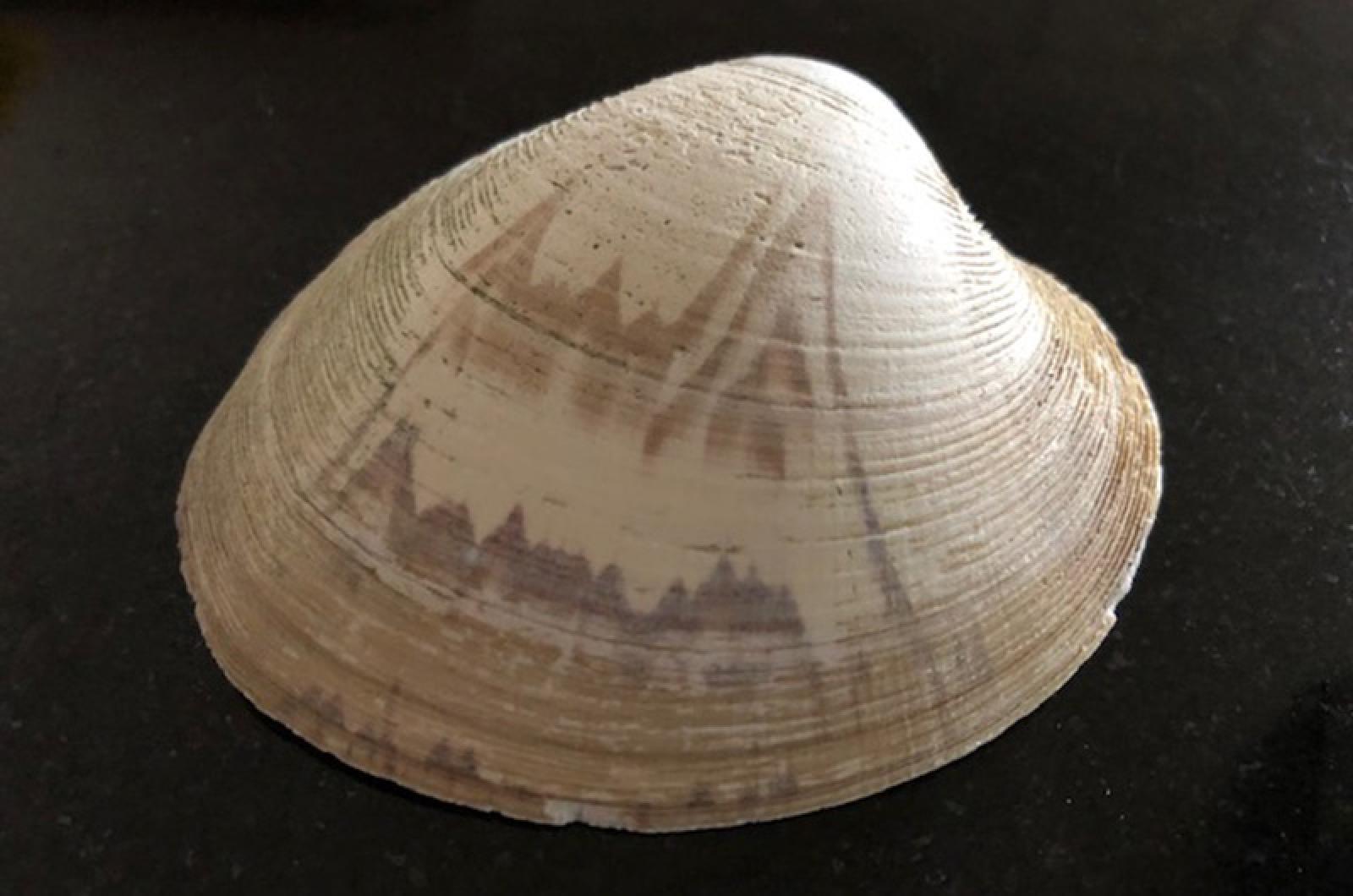Connie Alexander thought she was lucky.
And she was lucky; lucky to be spending a sunny, warm February day walking the north shore, looking for shells. Her good fortune also had to do with finding what she thought was a rare clam shell. It had a reddish-brown, zigzag pattern.
She calls these patterned beauties “striped quahogs.” Connie locates these streaked specimens by searching the shore for smaller clamshells that lack the purplish border inside, being mostly white on the shell’s interior. When she finds these special striped quahogs, she saves them for her grandkids.
Though no one wants to rain on anyone’s parade, it turns out that the find may not be as lucky or rare as Connie thought. To be fair, striped quahogs were unusual at one time: it is likely that only one to two percent of the natural clam population had this shell trait. More common were the unadorned gray-blue shells. The patterned clams are known as the notata variety of the quahog, Mercinaria mercinaria.
It was not exactly nature nor the hand of the divine that created so many of these striped shells. Instead, they thrive because of the preference and presence of Island scientists.
Credit the aquiculture fairies. Our local shellfish pixies include former and current Martha’s Vineyard Shellfish Group directors and biologists Rick Karney and Emma Green-Beach, respectively, who shed some light on the issue and, with their staff, make bivalve breeding magic.
Former Shellfish Hatchery director Rick Karney explains the commonality, presence and raison d’etre of notata during his time at the helm of the hatchery: “Katama Bay and Sengekontacket Pond are planted with hatchery-produced quahogs that have a higher percentage of the notata marking. Distinctive shell color phenotypes like notata are used to tag the seed to assess the success of our seeding program...The [color and pattern] tag has been used by hatcheries for years; while at the same time they were selecting for faster growth. As a result, notata quahogs are often faster-growing. We back cross notata broodstock with slower-growing native stocks to preserve local genetic fitness in hopes of getting faster-growing local stocks to keep up with the heavy recreational fishing demand.”
Current hatchery director Emma Green-Beach adds her updates of the program’s methodology. saying “When we pick quahog broodstock to spawn, about half of them have some notata marking and half have none. We don’t spawn any quahogs that are full notata stock. We make sure every clam has a nice growing edge, which means it is a healthy and actively growing animal. We also look for indication of purple shell, which isn’t a perfect estimation from the outside of course. I think it’s fair to say that we no longer put emphasis on selection for the notata check marks but many of the healthiest are part notata.”
The presence of so many notata clams let the scientist know that their work is succeeding, since it is their handiwork that allows for the increase in populations. It also should be a reminder to all of us who shellfish for food and fun, collect shells, or just enjoy the broken zigzag shells in our driveway that there are folks quietly working in the background, for nature and for us.
And that fact should make us feel happy as a clam, with or without those stripes.
Suzan Bellincampi is islands director for Felix Neck Wildlife Sanctuary in Edgartown and the Nantucket Wildlife Sanctuaries. She is also the author of Martha’s Vineyard: A Field Guide to Island Nature and The Nature of Martha’s Vineyard.




Comments
Comment policy »